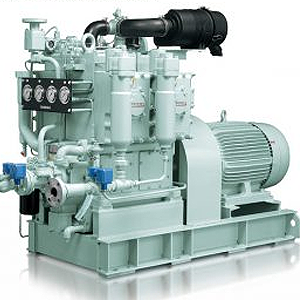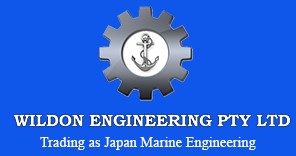Yanmar Air-Cooled and Water-Cooled Compressors: What are the differences?
Blog | April 21st, 2017

Two different cooling mediums keep compressors working, even when their machine parts generate copious amounts of heat. Yanmar air-cooled and water-cooled compressors make use of both branching fluid solutions. Still, if a design engineer is to select one of these supplementary cooling systems, he needs to understand the difference between air and water cooling, so let’s jump to this task by carrying out a comparative study.
Evaluating Primary Cooling Differences
Basically, air-cooling is used in distributed systems. The cooled-by-air models readily divide up into an array of compressors so that fluctuating loads can be managed by multiple rotary screw machines. This multiple machine network doesn’t typically subscribe to water cooling solutions. Contrariwise, larger compressors require dedicated channels of cooling power to handle heavier transient loads and peak pressure events.
Considering Marine Applications
Different types of compressors are installed throughout a seagoing vessel. There are self-contained refrigeration devices, larger chiller units, and then there are piped pneumatic lines supplying essential services. Smaller supply lines, perhaps as low as 700 kPa, supply pneumatic control systems and general air services. As for the primary airlines, the 3.0 MPa super-pressurised pipes, their compressors are responsible for heavy-duty tasks, including engine starting cycles. It’s these monsters that benefit from water cooling, a denser medium that can efficiently carry away the heat generated by a large-scale piece of pressurised equipment.
Machine Design and System Architectural Considerations
The smaller array of air compressors lives inside a large plant room, an area that accommodates multiple air cooling conduits. The design also provides space for branching air inlet pipes, discharge ducts, and numerous air cooling manifolds. Meanwhile, the large compressor adopts a multi-stage architecture, plus an intercooler, perhaps even an aftercooler, so that high-pressure pneumatic power is always on hand for the engines, generators, and primary utility services. Again, air is a standard cooling medium, but this solution becomes impractical when massive volumes of heat are produced by what is essentially a massive heat exchanger. Instead, the system can be condensed into a single channel, a piped water line that delivers more than enough heat exchanging potency.
On land, a water cooled compressor is a prohibitively expensive system because water towers are required to feed the cooling pipes. Naturally, while at sea, this important cooling medium is easy to access. In the meantime, Yanmar air cooled condensers work productively as a heat distributing asset when banks of medium-sized compressors or even a single smaller device requires heat management. Of course, even this latter cooling method requires maintenance and enough ventilation to keep the air chilly.
Optimized by NetwizardSEO.com.au
Recent Posts
- Turbochargers Supply from Japan Marine: Wildon Engineering’s Excellence in Global Shipping
- Mitsubishi VOS Ballast Water Treatment System: Next-Generation Marine Environmental Solutions
- Yanmar Marine Compressors: Reliable Power Systems for Commercial Vessels
- Water-Lubricated Stern Tube Bearings Explained: How EVR Technology Supports Marine Propulsion
- YANMAR Auxiliary Generator Engine Parts for Commercial Vessels
- Fluid Control Systems: Innovations in Marine Applications
- Yanmar Diesel Generators Australian Distributor: Power for Shipping & Marine Operations
- Navigation & Communication Equipment: Essential Tools for Safe Voyages
- Stern Tube Seals: Preventing Leaks & Maintaining Vessel Integrity
- Innovative Cathodic Protection Technologies for Maritime Industries
